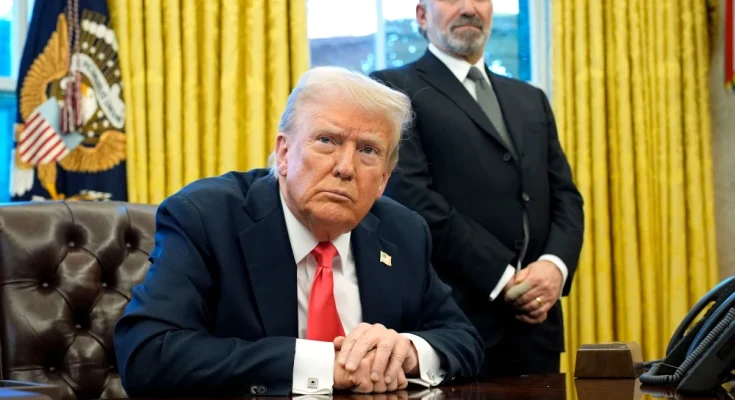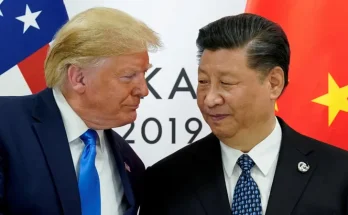Markets are heavily reacting to even the smallest developments in President Donald Trump’s tariff strategy, driven by a cloud of uncertainty that’s forcing investors to make educated guesses.
On Monday, stocks surged to their highest levels in over a week, buoyed by weekend reports from Bloomberg and The Wall Street Journal revealing that Trump may not impose blanket tariffs on major industrial sectors like automobiles, pharmaceuticals, and semiconductors. Tesla shares, which have been hit hard by weak sales and CEO Elon Musk’s controversies, spiked 9.5%. Previously, Tesla had warned Trump’s trade representative, Jamieson Greer, that retaliatory tariffs from other countries could hurt its business.
A source close to Trump told Family Us News Monday morning that the president has yet to finalize the full scale of his blanket tariff plan, expected to be revealed on April 2. Trump added more volatility to the situation when he announced via Truth Social that starting on that date, countries purchasing oil or gas from Venezuela would face a 25% tariff on any trade with the U.S.
Later in the day, Trump hinted at more flexibility with the tariffs, suggesting that other levies on industrial products might still be imposed. “I may give a lot of countries breaks, but it’s reciprocal,” he said. “But we might be even nicer than that. You know, we’ve been very nice to a lot of countries for a long time.” He also indicated that additional tariffs would likely target automobiles, lumber, and semiconductor chips.
Trump has shown a willingness to backtrack on some of his tariff threats while maintaining public pressure. Last week, he stated there was room for negotiation on tariffs with China and indicated that flexibility remained, even as he continued to pursue new duties with key U.S. trading partners. “I don’t change. But the word flexibility is an important word,” he remarked in the Oval Office. “Sometimes it’s flexibility. So there’ll be flexibility, but basically it’s reciprocal.”
Treasury Secretary Scott Bessent also suggested last week that the scope of the April 2 tariffs might be narrower than initially reported. He told Fox News that about 15% of countries, the so-called “Dirty 15,” with significant trade imbalances with the U.S., would be targeted. These include China, the European Union, Mexico, Vietnam, Taiwan, Japan, South Korea, Canada, and India.
Trump’s openness to negotiation is why the 25% tariffs on Mexico and Canada were scaled back after initial threats, and why they are now limited to goods not covered by the U.S.-Mexico-Canada trade agreement. Additionally, Trump showed flexibility when major auto manufacturers expressed concerns about the impact of tariffs on their businesses in North America.
The U.K.’s trade minister was scheduled to meet with White House officials to discuss a potential bilateral trade deal centered around technology, Reuters reported last week. Bloomberg also reported that the European Union’s trade chief would meet with U.S. officials on Tuesday. Meanwhile, U.S. trade talks with India continue this week.
In a major announcement, Hyundai, South Korea’s largest conglomerate, is expected to unveil a $20 billion investment in U.S. manufacturing, including a new steel plant.
As of Monday, only steel and aluminum tariffs, as well as higher duties on Chinese imports, have been implemented, despite a wave of threatened tariffs. Regardless of the final details, Trump’s tariff strategy continues to cast a shadow over economic growth forecasts. S&P Global’s financial group reported on Monday that business expectations for the upcoming year dropped to their second-lowest level since October 2022, driven by growing caution about the economy and concerns over the impact of the administration’s policies.
A separate S&P Global report found that tariffs are increasingly dominating corporate earnings calls, with nearly 900 mentions of trade issues in fourth-quarter discussions. Analysts from S&P noted, “The near universal intent to pass through higher tariffs via prices means either inflation will result, or if the pricing environment is more resistant, corporate profit margins will begin to feel pressured.”
Last week, the Federal Reserve acknowledged that tariff threats were pushing inflation upward, though the full extent of this impact remains unclear. Fed Chair Jerome Powell indicated that any inflationary effects could be “transitory” depending on the ultimate scope of the tariffs.



